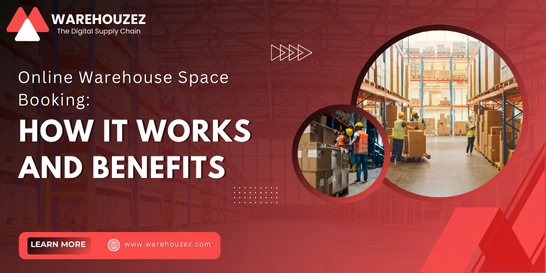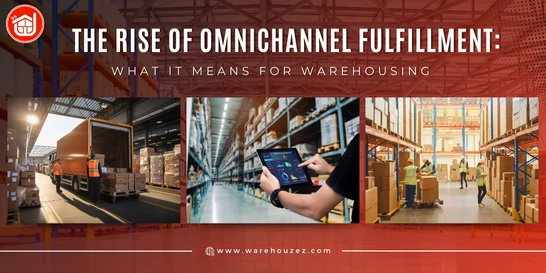Warehouse Automation Trends for 2023: What You Need to Know
Warehouse Automation Trends for 2023: What You Need to Know
Without a doubt, warehouse automation has become an integral part of modern supply chain management, significantly enhancing operational efficiency and streamlining inventory processes. As we approach midway through 2023, it is crucial to stay abreast of the latest warehouse automation trends that will shape the industry in the upcoming years. From advancements in robotics and artificial intelligence to the integration of Internet of Things (IoT) technologies, this blog will delve into the cutting-edge solutions that are set to revolutionize warehousing operations, optimizing productivity and transforming the way goods are stored, picked, and shipped.
Join us as we explore the exciting warehouse automation trends that are on the horizon for 2023 and beyond.
What is Warehouse Automation?
Warehouse Automation Trends for 2023: What You Need to Know
31 August, 2023 By Aakanksha Warehouse Service
Essentially, warehouse automation refers to the use of advanced technologies and systems to automate various tasks and processes within a warehousing facility or distribution center. This includes the use of robotics, artificial intelligence, and other cutting-edge technologies to streamline operations, improve productivity, and enhance overall efficiency. Warehouse automation can involve automating tasks such as inventory management, order picking and packing, transportation and logistics, and even the handling of returns. These technologies streamline the entire process of order fulfillment, from processing orders to picking, packing, and shipping orders. In this regard, warehouse automation is the wave of the future, that is, the future of fulfillment.
By implementing automated systems and technologies, companies can reduce costs, eliminate human error, increase speed and accuracy, and certainly optimize their supply chain operations. This ultimately leads to improved customer satisfaction and a competitive advantage in today's fast-paced and increasingly digital business landscape.
Overview of the Latest Trends and Technologies in Warehouse Management
In recent years, warehouse management has seen significant advancements, especially with the introduction of state-of-the-art technologies and the adoption of the newest trends. One of the latest trends is the rise of automation systems, where tasks such as inventory tracking, order picking, and packaging are carried out by robotics and automated machines. This not only enhances accuracy and efficiency but also reduces labor costs significantly. Another trend is the implementation of artificial intelligence (AI) and machine learning algorithms to manage inventory levels, analyze data, and optimize supply chain operations. Additionally, the use of cloud-based warehouse management systems and mobile technologies has become increasingly popular, enabling real-time data access and improved communication across the warehouse. Last but not least, sustainability practices such as using renewable energy sources, minimizing waste, and implementing eco-friendly packaging solutions have gained momentum in recent years, highlighting the importance of environmental stewardship in warehouse management. Overall, these latest trends and technologies are revolutionizing warehousing industry, streamlining operations, and boosting productivity.
Benefits and Challenges of Warehouse Automation
Now that we are clear on the basics, let's quickly explore the benefits and challenges associated with warehouse automation.
Benefits
1. Cost savings: Advancements in technology help reduce labor costs over time as fewer workers are needed to perform repetitive tasks. Additionally, automated systems require less physical space compared to manual operations, translating into cost savings on warehousing expenses. Moreover, automation helps minimize errors and damages, reducing losses and increasing profitability.
2. Increased efficiency: Warehouse automation reduces the reliance on manual labor, resulting in faster and more accurate order fulfillment. Automated systems can handle tasks such as picking, sorting, and packing with greater speed and precision, leading to improved productivity.
3. Enhanced inventory management: Automated systems enable real-time tracking and visibility of inventory levels, allowing for better inventory control. This helps optimize stock levels, reduce stockouts, and prevent overstocking, leading to cost savings and improved customer satisfaction.
4. Improved safety: Automation in warehouse management often involves the use of robots and machinery that can perform dangerous tasks that would otherwise be performed by humans. By automating these tasks, the risk of workplace accidents and injuries can be significantly reduced, thereby improving overall safety in the warehouse.
Challenges
1. Cost: Implementing automated technology solutions can be a significant investment in terms of purchasing, installing, and maintaining the necessary equipment and software.
2. Infrastructure: Existing warehousing infrastructure may not be compatible with automated technologies, requiring significant modifications or even the construction of a new facility.
3. Workforce Adaptation: Automation may lead to job displacement or require workers to adapt their skills to operate and maintain the new automated systems.
4. Technology Integration: Integrating different automation technologies and ensuring seamless communication between them can be complex and time-consuming.
5. Maintenance and Support: Automated equipment requires regular maintenance and technical support, which can create additional challenges and expenses.
However, there are abundant benefits associated with warehouse automation trends and technologies, and these benefits always outweigh the challenges that come with the implementation of these technologies.
Emerging Trends in Warehouse Automation for 2023
Let's explore the emerging and exciting warehouse automation trends for 2023 and beyond:
1. Increase in Robotics and Automation
The use of robots in warehouses will continue to rise in 2023 and beyond. Advanced robotic systems will be employed for various tasks, such as material handling, order picking, and packing. Collaborative robots (cobots) will work alongside human workers, assisting in repetitive and labor-intensive tasks. Automation will enable faster order fulfillment, error reduction, and increased productivity, resulting in cost savings for warehouse operators. As a result, it will also redefine the future of fulfillment by enabling faster order fulfillment.
2. Implementation of Internet of Things (IoT) Technology
There's no denying the fact that IoT devices will play a crucial role in warehouse management in 2023 and the upcoming years. Sensors and wearables will be integrated into various warehouse equipment, allowing real-time tracking and monitoring of inventory, equipment performance, and environmental conditions. IoT connectivity will facilitate seamless communication between different components of the warehouse ecosystem, enabling better coordination and synchronization of operations.
3. Predictive Analytics
One of the latest trends in warehouse management is the use of predictive analytics for better demand forecasting and inventory management. WMS software systems are expected to leverage predictive analytics to accurately forecast demand and manage inventory levels. By analyzing historical sales data, customer preferences, market trends, and even external factors like weather patterns, warehouses can proactively respond to fluctuations in demand, ensuring optimal inventory levels and preventing stockouts or overstock situations.
4. Utilization of Warehouse Management Systems
Advancements in warehousing will increasingly rely on the use of advanced warehouse management systems (WMS) for streamlined operations. These systems help improve inventory accuracy, order fulfillment, and overall warehouse efficiency. WMS with features like real-time inventory tracking, automated picking and packing, and intelligent routing of goods will become commonplace in 2023 and beyond. Integration with other automation technologies, such as robotics and IoT-enabled devices, will further enhance operational capabilities.
Wrapping Up
To wrap things up, warehouse automation is steadily evolving and advancing with each passing year. As we look towards 2023, we can expect to see several key trends shaping the industry. From the adoption of advanced technologies like artificial intelligence and robotics, to the integration of automated systems with existing warehouse management software, the future of warehouse automation holds immense promise. These trends have the potential to revolutionize the way products are stored, picked, and shipped, resulting in improved efficiency, accuracy, and cost-effectiveness. By staying abreast of these trends and embracing the latest innovations, businesses can position themselves at the forefront of the industry, ensuring their warehouses remain competitive and adaptable in the ever-changing landscape of e-commerce and logistics.



